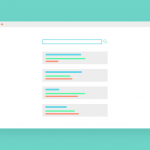How to Сreate a Two-Sided Online Marketplace Like Etsy
The number of two-sided (or peer-to-peer) marketplaces is growing. Despite intense competition, a two-sided marketplace is still a promising business model. One of the most prominent examples is Etsy ‒ a marketplace of vintage and handmade goods that brings together crafters, merchants, and buyers. But Etsy isn’t the only successful peer-to-peer marketplace. Today, with the help of Uber ‒ a marketplace for transportation services ‒ you can easily get around the city. You can even outsource household tasks via platforms like TaskRabbit.
All these businesses bring million-dollar revenues to their creators, save users’ money, and make people’s lives easier. In this article we’ll tell you how to build a two-sided marketplace like Etsy. Who knows, maybe you’ll become the next online business star?
What is Etsy?
Etsy is an online marketplace that serves as a home for handmade items including clothes, accessories, jewellery, and home decor as well as ‘vintage’ items (at least 20 years old). People can buy and sell items on Etsy, a contributor to the sharing economy.
Etsy was launched in 2005 in a simple Brooklyn apartment by Rob Kalin, Chris Maguire, and Haim Schoppik, whose aim was to allow crafters and vintage merchants to make a living by selling their goods. It took about three months for Etsy’s creators to launch the very first version of the site, which later grew into a successful business. Today, there are around 27 million active buyers and around 1.7 million active sellers on Etsy, and these figures continue to grow.
There are two types of users on Etsy: sellers and buyers. Sellers can open their shops ‒ virtual storefronts that display their goods. Buyers, accordingly, are able to browse the website with no need to sign up or purchase anything.
How can I create a marketplace like Etsy?
If you want to create your own marketplace, there are several ways to realize this dream. In just a moment we’ll talk about the pros and cons of each approach..
Your first option is to use a SaaS solution like Sharetribe or Marketplacer to build your marketplace with minimal effort. This method has its advantages: by choosing a platform like Sharetribe, you can create a functioning marketplace in literally one day, since all the functionality is already built. Also, you don’t have to invest in codebase development, maintenance, or testing ‒ SaaS vendors do all that work for you. But despite the pros, a marketplace built on a SaaS solution might not be flexible enough, and may require further customization. In this case, you’ll probably need to hire a specialist to deliver necessary features.
Your second option is to rely on an open-source platform like Sharetribe (yes, Sharetribe provides an open-source solution as well) or Cocolabs. The main advantage of such an approach is that you can customize your marketplace as you wish: all you need is someone who knows Ruby on Rails or whichever framework or programming language your marketplace solution is built on. When choosing an open-source platforms, be ready to invest in specialists who can handle complex systems like Sharetribe and customize them according to your taste.
The final – and most preferable – option is to launch your own marketplace by simply building it from scratch. In this case, you’ll need to hire a team of developers and designers to create a unique design, develop the features you request, and test and deploy your product. At RubyGarage, we know that building a marketplace from scratch requires a lot of time and financial investment. So if you’re on a tight budget or strict time constraints, this approach might not be the best for you.
As we mentioned before, Etsy was developed from scratch in about three months. Of course, when it first launched it had simple functionality and frugal design. But the MVP version allowed Etsy’s creators to validate their business idea and gain an audience. As promised, we’ll now tell you how to create a marketplace like Etsy by creating it from scratch. Let’s see, in detail, the core functionality that we need to develop for an Etsy-like marketplace.
What features do I need to develop?
Most marketplaces support two types of users: buyers and sellers. Etsy is no exception. We’ll define core features for both types of users. Keep in mind that the described functionality is suitable for an MVP, meaning it’s a basic set of functionality that all marketplaces need at minimum.
To start with, let’s define which features will be used by both sellers and buyers:
- Sign-up/sign-in via email and popular social networks including Facebook and Google;
- Account settings (email and password settings, name, address etc);
- Notifications;
- User dashboard
Next, let’s see what buyers on an Etsy-like marketplace should be able to do:
- Manage their personal profile;
- Search for items using filters (location, price range, type of item, and shipping options, for instance);
- Choose quantity, size, color or other necessary options on an item’s page;
- Send messages to sellers;
- Leave reviews and rate items;
- Add and remove items from a list of favorites;
- Manage payment methods;
- Place orders; and
- Views transaction history.
Finally, sellers should be able to:
- Create seller profiles;
- Manage their profile information ( seller descriptions)
- List items for sale;
- Manage information about items;;
- Communicate with buyers via messages; and
- Choose payout methods and view transaction history.
We’ve briefly described what it takes to develop an Etsy-like product. Now you have the information you need to choose among the common approaches to building a two-sided marketplace, and have a rough idea of what features you should implement to make your marketplace stand out. Good luck!









![Writing the Perfect Guest Post Pitch [Infographic]](https://technofaq.org/wp-content/uploads/2019/02/How-to-write-perfect-guest-post-pitch-150x150.jpg)





